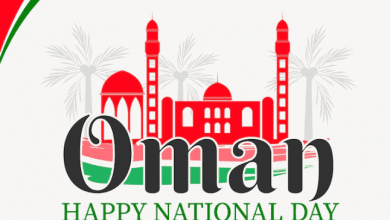World Urbanism Day
Shaping Tomorrow's Cities: Exploring World Urbanism Day | Sustainable Urban Planning, Design, and Development Insights
World Urbanism Day is observed annually on November 8th. Embrace the spirit of World Urbanism Day, a global event dedicated to envisioning and shaping sustainable urban futures. Dive into the world of urban planning, design, and development, and gain insights into key areas such as sustainable cities, urban expansion, and community engagement. Join us as we celebrate the role of resilient urban planning, mixed-use developments, and renewable energy in creating vibrant and livable urban environments. Explore articles, guides, and resources that highlight the journey towards building smarter, greener, and more inclusive cities.
Read also:
World Urbanism Day: Celebrating Sustainable Urban Development
World Urbanism Day is a global event that highlights the importance of urban planning, design, and development for creating sustainable and thriving cities. This day serves as a reminder of the critical role that well-designed urban spaces play in enhancing the quality of life for residents and addressing the challenges of rapid urbanization. From urban planning to community engagement, let’s delve into the various aspects that make up the essence of World Urbanism Day.
Urban Planning: Shaping the Blueprint for Cities
Urban planning is the foundation upon which cities are built and organized. Zoning regulations, a cornerstone of urban planning, determine how different areas of a city can be used – from residential to commercial. Infrastructure management ensures the smooth functioning of essential services like transportation, water supply, and energy distribution. Land use planning involves allocating spaces for various purposes, contributing to a balanced urban environment. Urban growth and transit-oriented development emphasize the need for sustainable expansion, walkable neighborhoods, and efficient public transportation systems.
Sustainable Cities: Embracing Green Practices
Creating sustainable cities is essential for addressing environmental challenges. Green infrastructure, including parks, green roofs, and urban forests, helps counter the adverse effects of urbanization. Eco-friendly urbanism promotes environmentally conscious living by encouraging practices such as waste reduction, energy conservation, and the use of renewable energy sources. Low-carbon living and resilient urban planning further emphasize reducing carbon footprints and preparing cities for potential disasters, such as climate-related events.
City Development: Enhancing Urban Living
City development focuses on improving the quality of urban life. Real estate trends provide insights into housing and commercial property markets, influencing the way cities are built and expanded. Urban revitalization breathes new life into neglected neighborhoods, while mixed-use developments offer multifunctional spaces that cater to diverse needs. Urban expansion, coupled with economic growth, brings forth opportunities and challenges, necessitating controlled growth and the careful management of urban boundaries.
Urban Design: Creating Aesthetically Pleasing Spaces
Urban design aims to create visually appealing and functional urban spaces. Public spaces are integral to cities, offering places for people to gather, relax, and interact. Architectural aesthetics contribute to the overall character of a city, while the urban landscape and streetscape design enhance the aesthetic appeal of streets and public areas. Urban artistry further adds cultural and creative elements to urban environments.
Community Engagement: Empowering Residents
Community engagement involves the active participation of residents in shaping their urban environment. Citizen participation ensures that the voices of residents are heard in decision-making processes. Neighborhood involvement fosters a sense of belonging and ownership, leading to better-designed and more inclusive urban spaces. Public consultation and collaborative planning further promote transparency and inclusivity, ensuring that urban development aligns with the needs and aspirations of the community.
Zoning Regulations: Balancing Urban Functionality
Zoning regulations play a pivotal role in maintaining order and functionality in cities. Land use planning dictates the allocation of land for different purposes, while building codes ensure that structures are safe and meet certain standards. Zoning ordinances guide the overall development of areas, and land development policies influence the way vacant land is utilized. Zoning boards oversee the implementation and enforcement of these regulations.
Infrastructure Management: Keeping Cities Running
Infrastructure management ensures that essential services are effectively provided to urban residents. Public utilities encompass services like water supply, energy distribution, and waste management. Transportation systems facilitate the movement of people within cities, while infrastructure maintenance is crucial for sustaining the functionality of these systems over time. Water and sewage management contribute to the overall health and sanitation of urban areas.
Land Use: Optimizing Urban Spaces
Efficient land use is essential for creating well-organized and functional cities. Urban land allocation involves designating areas for residential, commercial, and recreational purposes. Land development policies guide how land is used and developed, while land conservation efforts aim to protect green spaces and natural habitats within urban environments. Land utilization ensures that available land is used effectively, and zoning categories classify areas based on their designated uses.
Urban Growth: Navigating Challenges
Urban growth encompasses the expansion of cities and the challenges that come with it. City population trends provide insights into demographic shifts and urbanization rates. Urban expansion and metropolitan growth can lead to increased population density, requiring careful planning to maintain quality living conditions. As cities grow, urbanization challenges such as housing affordability, transportation congestion, and resource management need to be addressed.
Transit-Oriented Development: Prioritizing Accessibility
Transit-oriented development focuses on creating neighborhoods that are easily accessible through public transportation. Walkable neighborhoods encourage walking and cycling as viable modes of transportation. Public transportation systems, including transit hubs and mixed-use transit centers, facilitate efficient mobility options. Pedestrian-friendly urbanism aims to create safe and enjoyable walking environments within cities.
Green Infrastructure: Nurturing Urban Nature
Green infrastructure promotes the integration of nature into urban landscapes. Sustainable landscaping and green spaces enhance the aesthetic appeal of cities while providing habitats for local flora and fauna. Biodiversity conservation efforts contribute to maintaining ecological balance within urban environments. Urban ecology studies the interactions between living organisms and their surroundings, highlighting the importance of creating harmonious urban ecosystems.
Eco-Friendly Urbanism: A Path to Sustainability
Eco-friendly urbanism encourages sustainable living practices within cities. This includes minimizing environmental impact through responsible resource consumption and waste reduction. Green city practices encompass a wide range of strategies, from encouraging public transportation use to implementing energy-efficient building designs. Eco-conscious development and carbon-neutral urban planning focus on minimizing carbon emissions and fostering a sustainable urban future.
Renewable Energy: Powering Sustainable Cities
The integration of renewable energy sources is a key aspect of sustainable urban development. Solar power in cities harnesses sunlight for clean energy generation, while wind energy integration utilizes wind turbines to produce electricity. Sustainable power sources contribute to reducing the reliance on fossil fuels and decreasing greenhouse gas emissions. Clean energy solutions, including solar and wind technologies, play a crucial role in achieving urban sustainability.
Low-Carbon Living: Reducing Environmental Impact
Low-carbon living emphasizes practices that reduce carbon footprints within urban areas. This includes adopting a sustainable lifestyle that minimizes energy consumption and waste generation. Eco-conscious choices, such as using energy-efficient appliances and reducing water consumption, contribute to a more environmentally friendly urban lifestyle. Green commuting options, like walking, cycling, and using public transportation, further decrease carbon emissions.
Resilient Urban Planning: Preparedness for Challenges
Resilient urban planning focuses on preparing cities for potential challenges and crises. Disaster preparedness involves developing strategies to mitigate the impact of natural and man-made disasters. Climate adaptation ensures that cities are equipped to handle the effects of climate change, such as rising sea levels and extreme weather events. Resilience strategies and crisis resilience plans contribute to maintaining the functionality and well-being of urban areas during adverse situations.
Real Estate Trends: Shaping Urban Development
Real estate trends play a crucial role in shaping the trajectory of urban development. Property market analysis provides insights into the demand and supply of housing and commercial spaces. Real estate investments influence the allocation of resources for urban projects, while housing market trends reflect shifts in housing preferences and affordability. Commercial property development contributes to creating spaces for businesses and industries.
Urban Revitalization: Breathing New Life into Cities
Urban revitalization involves rejuvenating areas within cities that may have experienced neglect or decline. Neighborhood renewal aims to improve living conditions and enhance community well-being. Urban regeneration efforts lead to the transformation of underutilized spaces into vibrant cultural and economic hubs. Urban decay reversal and redevelopment projects contribute to creating attractive and functional urban environments. City transformation involves holistic changes that elevate the overall quality of life for residents.
Mixed-Use Developments: Versatile Urban Spaces
Mixed-use developments integrate various functions within urban spaces. These developments encompass integrated urban spaces that combine residential, commercial, and recreational facilities. Multifunctional complexes offer convenience by providing diverse services within close proximity. Mixed-use zoning fosters live-work-play environments, allowing residents to easily access their workplaces, amenities, and recreational areas. Diversified urban areas contribute to vibrant and dynamic cityscapes.
Urban Expansion: Challenges and Strategies
Urban expansion presents both opportunities and challenges for cities. City growth challenges include managing increased population density, ensuring adequate infrastructure, and maintaining quality living conditions. Urban sprawl, characterized by rapid and unplanned expansion, can lead to environmental degradation and transportation congestion. Metropolitan expansion requires thoughtful planning to balance growth with the preservation of natural resources. Managing urban boundaries and practicing controlled growth are crucial strategies to ensure sustainable urban development.
Economic Growth: Fueling Urban Prosperity
Economic growth is closely linked to the development and prosperity of cities. Urban economies serve as hubs for business activities and job opportunities. Business development initiatives attract investments and contribute to the growth of industries. Economic prosperity within cities enhances the quality of life for residents by providing access to goods, services, and cultural experiences. Job opportunities in diverse sectors contribute to urban wealth creation and overall urban well-being.
FAQs
What is World Urbanism Day?
World Urbanism Day is a global event that celebrates urban planning, design, and development for creating sustainable cities.
Why is sustainable urban development important?
Sustainable urban development ensures that cities are built and organized in ways that enhance the quality of life for residents while addressing environmental challenges.
What is transit-oriented development?
Transit-oriented development focuses on creating neighborhoods that are easily accessible through public transportation, promoting efficient mobility options.
How do cities promote eco-friendly practices?
Cities promote eco-friendly practices through initiatives such as sustainable living, energy conservation, waste reduction, and the use of renewable energy sources.
What is urban revitalization?
Urban revitalization involves rejuvenating neglected areas within cities through initiatives that improve living conditions and enhance community well-being.
How can cities manage urban growth challenges?
Cities can manage urban growth challenges by implementing controlled growth strategies, maintaining adequate infrastructure, and addressing population density issues.
What role does economic growth play in cities?
Economic growth fuels urban prosperity by attracting investments, creating job opportunities, and providing access to goods and services.
How can citizens engage in urban planning?
Citizens can engage in urban planning through citizen participation, neighborhood involvement, public consultation, and collaborative planning processes.
What is the significance of green infrastructure?
Green infrastructure, including parks and green spaces, contributes to urban aesthetics, biodiversity conservation, and environmental balance.
How does resilient urban planning prepare cities for challenges?
Resilient urban planning prepares cities for challenges by developing strategies for disaster preparedness, climate adaptation, and crisis resilience.
Conclusion: World Urbanism Day
World Urbanism Day serves as a reminder of the crucial role that urban planning, design, and development play in creating sustainable and vibrant cities. From eco-friendly practices to resilient urban planning, each aspect contributes to shaping urban environments that are livable, inclusive, and prepared for the challenges of the future. By prioritizing community engagement, sustainable practices, and thoughtful design, cities can pave the way for a brighter and more prosperous urban future.



